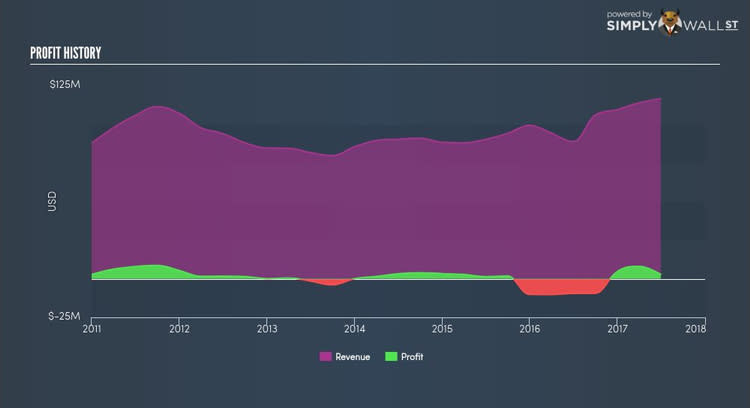One Thing To Consider Before Buying Camtek Ltd (CAMT)

If you are looking to invest in Camtek Ltd’s (NASDAQ:CAMT), or currently own the stock, then you need to understand its beta in order to understand how it can affect the risk of your portfolio. Every stock in the market is exposed to market risk, which arises from macroeconomic factors such as economic growth and geo-political tussles just to name a few. This is measured by its beta. Not all stocks are expose to the same level of market risk, and the broad market index represents a beta value of one. A stock with a beta greater than one is expected to exhibit higher volatility resulting from market-wide shocks compared to one with a beta below one.
See our latest analysis for CAMT
An interpretation of CAMT's beta
With a five-year beta of 0.97, Camtek appears to be a less volatile company compared to the rest of the market. This means the stock is more defensive against the ups and downs of a stock market, moving by less than the entire market index in times of change. CAMT’s beta indicates it is a stock that investors may find valuable if they want to reduce the overall market risk exposure of their stock portfolio.
Does CAMT's size and industry impact the expected beta?
CAMT, with its market capitalisation of USD $181.24M, is a small-cap stock, which generally have higher beta than similar companies of larger size. In addition to size, CAMT also operates in the semiconductors and semiconductor equipment industry, which has commonly demonstrated strong reactions to market-wide shocks. As a result, we should expect a high beta for the small-cap CAMT but a low beta for the semiconductors and semiconductor equipment industry. It seems as though there is an inconsistency in risks portrayed by CAMT’s size and industry relative to its actual beta value. A potential driver of this variance can be a fundamental factor, which we will take a look at next.
Can CAMT's asset-composition point to a higher beta?
During times of economic downturn, low demand may cause companies to readjust production of their goods and services. It is more difficult for companies to lower their cost, if the majority of these costs are generated by fixed assets. Therefore, this is a type of risk which is associated with higher beta. I test CAMT’s ratio of fixed assets to total assets in order to determine how high the risk is associated with this type of constraint. Since CAMT’s fixed assets are only 28.95% of its total assets, it doesn’t depend heavily on a high level of these rigid and costly assets to operate its business. As a result, the company may be less volatile relative to broad market movements, compared to a company of similar size but higher proportion of fixed assets. Similarly, CAMT’s beta value conveys the same message.
What this means for you:
Are you a shareholder? You may reap the benefit of muted movements during times of economic decline by holding onto CAMT. Its low fixed cost also means that, in terms of operating leverage, its costs are relatively malleable to preserve margins. I recommend analysing the stock in terms of your current portfolio composition before increasing your exposure to the stock.
Are you a potential investor? Before you buy CAMT, you should look at the stock in conjunction with their current portfolio holdings. CAMT may be a great cushion during times of economic downturns due to its low beta and low fixed cost. However, in addition to this, I recommend taking into account its fundamentals as well before jumping into the investment.
Beta is one aspect of your portfolio construction to consider when holding or entering into a stock. But it is certainly not the only factor. Take a look at our most recent infographic report on Camtek for a more in-depth analysis of the stock to help you make a well-informed investment decision. But if you are not interested in Camtek anymore, you can use our free platform to see my list of over 50 other stocks with a high growth potential.
To help readers see pass the short term volatility of the financial market, we aim to bring you a long-term focused research analysis purely driven by fundamental data. Note that our analysis does not factor in the latest price sensitive company announcements.
The author is an independent contributor and at the time of publication had no position in the stocks mentioned.

